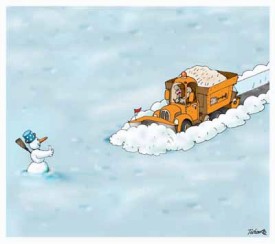Kosovo's poisoned generation
Kosovo Roma, expelled from their homes by ethnic Albanian extremists, are facing Europe's worst ever lead poisoning.
(Nick Thorpe, BBC) Wednesday, January 14, 2009
A small child is sweeping the yard outside her home - anywhere else the scene would be touching - but here in the Cesmin Lug refugee camp in northern Kosovo, it is tragic.
The children are sick with lead poisoning.
The camps were built close to the Trepca lead mine and smelting works.
The factory was closed by order of the UN administration in Kosovo, in 2000. But the slag heaps were never cleaned up.
The lead blackens the children's teeth, blanks out their memory, and stunts their growth.
The children swing between bursts of nervous hyperactivity, and something like a coma.
Some have epileptic fits.
"Every child conceived in these camps will be born with irreversible brain damage," says Paul Polanski, a US human rights activist based in Nis, Serbia.
"Everyone talks about resettlement, but that's not the problem, the problem is medical treatment."
Dangerous levels
Mr Polanski claims 77 people have died in Cesmin Lug and another nearby town, Osterode, mainly through complications from lead poisoning.
The local UN administration in Mitrovica sees him as a trouble maker.
Lead in the blood is measured in micrograms per decilitre.
"This is the worst ever lead poisoning that we know of in Europe," said Dorit Nitzan, head of the World Health Organization (WHO) regional office in Belgrade.
"We are talking in the tens - 40-50 mg/dl, more than a 100 in the blood... really high levels."
In 2004, the WHO recommended the evacuation of Cesmin Lug, and two more Roma camps at Kablare and Zitkovac.
All had been set up by the UNHCR in 1999 as a temporary measure, when the Roma Mahalla, on the southern shore of the Ibar River, was burnt down by Albanians in the dying days of the conflict over Kosovo.
In 2006, Kablare and Zitkovac were closed down, and the Roma from there moved to Osterode, a former French army base.
It was polluted by lead too, but after the topsoil was removed and concrete put down, the WHO classified it as "safer" than before, and about 600 Roma, including some from Cesmin Lug, moved in.
Some children began medical treatment, known as "chelation" - to clear the lead from the blood - sponsored by the WHO.
But the success of the treatment assumes that the children have been removed from the source of the pollution - that assumption remains a source of controversy today.
Who is responsible?
In Cesmin Lug, children go barefoot, even in winter, on the polluted earth.
In Osterode there is concrete, running water, and indoor toilets, but still the wind blows the deadly dust through the air.
In May 2008, the UNHCR handed responsibility for the camps to Kosovo.
"It was quite a shock," says Sasa Risic, the minister for communities and returns.
"We were told to solve, immediately, a problem which the UN had not been able to solve for nine years."
The UNHCR turned down our request for an interview, on the grounds that administration of the camps belonged to the UN Mission in Kosovo, Unmik.
"The main culprit is always Unmik, or the UN, but it's not true," said Gyorgy Kakuk, outgoing spokesman of Unmik in northern Mitrovica.
So what can Unmik fairly be blamed for? I asked.
"Our responsibility over the years," he replies carefully, "lies in the fact that we were not tough enough, in bringing those people back, from the beginning."
"We always withdrew when we faced resistance."
Resistance came from two sources.
One was the local council in Albanian-run southern Mitrovica, which delayed the rebuilding of the Roma Mahalla, where the gypsies lived before 1999; the other was the Roma in the camps themselves.
Today, the rebuilding of Roma Mahalla in southern Mitrovica, funded by the Dutch and Norwegian governments, is proceeding slowly.
In Phase 1, some 400 Roma returned, but Phase 2 has not yet started.
The US government has also launched a new project to re-house 50 families from Cesmin Lug - but there are complications.
Some Roma at Cesmin Lug told me they were afraid to leave the Serb-controlled north, for the Albanian-majority south, because they feared they would lose their welfare payments - which were still paid by Belgrade.
Others said they would not feel safe living among Albanians again, after what happened in 1999.
Later this month, the WHO will make their next fact-finding visit to the camps.
As a wintry sun sets over the slag heaps, the children sing a nursery rhyme some say dates back to the time of the Great Plague in England.
"Ring a-ring o'roses, a pocket full of posies. A-tishoo! A-tishoo! We all fall down."
http://news.bbc.co.uk/go/pr/fr/-/2/hi/europe/7827031.stm







